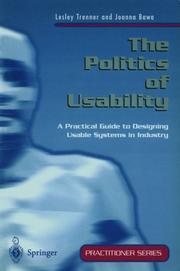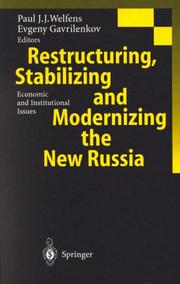| Listing 1 - 10 of 25 | << page >> |
Sort by
|
Book
ISBN: 3540511407 3642837891 9783540511403 Year: 1989 Publisher: Berlin Springer
Abstract | Keywords | Export | Availability | Bookmark
 Loading...
Loading...Choose an application
- Reference Manager
- EndNote
- RefWorks (Direct export to RefWorks)
In recent years, population economics has become increasingly popular in both economic and policy analysis. For the inquiry into the long term development of an economy, the interaction between demographic change and economic activity cannot be neglected without omitting major aspects of the problems. This volume helps to further developments in theoretical and applied demographical economics covering the issues of demographic change and economic development. The interaction between demographic change and economic development in the long run is one central issue. One conjecture is that it is mainly the relative population pressure which controls the pace of economic development. However, econometric evidence presented in the book does not support this hypothesis. Other papers deal with the relationships between fertility and business cycle fluctuations, the timing of births, the efficiency in intergenerational transfers, the role of open economies for the population issue, historical perspectives of demographic change in Hungary and an outline of recent developments of applied modelling using input-output models, programming models or econometric techniques.
Economic conditions. Economic development --- Demography --- Economic development --- Business. --- Management science. --- Population. --- Demography. --- Economics. --- Population Economics. --- Business and Management, general.

ISBN: 0792385020 1461370701 1461545838 9780792385028 Year: 2000 Publisher: Boston, Mass. Kluwer
Abstract | Keywords | Export | Availability | Bookmark
 Loading...
Loading...Choose an application
- Reference Manager
- EndNote
- RefWorks (Direct export to RefWorks)
All property and casualty insurers are required to carry out loss reserving as a statutory accounting function. Thus, loss reserving is an essential sphere of activity, and one with its own specialized body of knowledge. While few books have been devoted to the topic, the amount of published research literature on loss reserving has almost doubled in size during the last fifteen years. Greg Taylor's book aims to provide a comprehensive, state-of-the-art treatment of loss reserving that reflects contemporary research advances to date. Divided into two parts, the book covers both the conventional techniques widely used in practice, and more specialized loss reserving techniques employing stochastic models. Part I, Deterministic Models, covers very practical issues through the abundant use of numerical examples that fully develop the techniques under consideration. Part II, Stochastic Models, begins with a chapter that sets up the additional theoretical material needed to illustrate stochastic modeling. The remaining chapters in Part II are self-contained, and thus can be approached independently of each other. A special feature of the book is the use throughout of a single real life data set to illustrate the numerical examples and new techniques presented. The data set illustrates most of the difficult situations presented in actuarial practice. This book will meet the needs for a reference work as well as for a textbook on loss reserving.
Actuarial mathematics --- Insurance --- Reserves --- Business. --- Management science. --- Finance. --- Business and Management, general. --- Finance, general. --- Funding --- Funds --- Economics --- Currency question --- Quantitative business analysis --- Management --- Problem solving --- Operations research --- Statistical decision --- Trade --- Commerce --- Industrial management --- Insurance - Reserves

ISBN: 3540761810 1447115309 Year: 1998 Publisher: London Springer
Abstract | Keywords | Export | Availability | Bookmark
 Loading...
Loading...Choose an application
- Reference Manager
- EndNote
- RefWorks (Direct export to RefWorks)
Why This Book, Why Now? It is now widely recognized that in the development of IT systems, the technology driven focus of the past has been eclipsed by a concern for user satisfaction and user productivity. It is well known that usability engineering helps make systems easier to use and more relevant to business needs. The benefits of producing usable computer systems have been proven in careful dollar or pound calculations and any computer user who has interacted with a system designed for usability will enthuse about the benefits and refuse to go back to the bad old days. More and more organizations are starting to take usability seriously. Along with Microsoft and Apple and other IT organizations, we now find banks, insur ance companies, multi-national pharmaceuticals and many other non-IT corpora tions starting to "do something about usability". It seems as if there is plenty of material explaining how to do it. HCI (Human Computer Interaction - or CHI, Computer Human Interaction in the USA) has been studied in academia for several years and there are a range of books on usability engineering for practi tioners from systems engineering and user interface design to usability evaluation. However, as many practitioners have found, although you do need to understand the theories and be familiar with the techniques, applying them in a commercial context is not a straightforward matter.
Production management --- Computer. Automation --- System design --- Management information systems --- Engineering & Applied Sciences --- Computer Science --- System design. --- Management information systems. --- User interfaces (Computer systems). --- Business. --- Management science. --- User Interfaces and Human Computer Interaction. --- Business and Management, general. --- Quantitative business analysis --- Management --- Problem solving --- Operations research --- Statistical decision --- Trade --- Economics --- Commerce --- Industrial management --- Interfaces, User (Computer systems) --- Human-machine systems --- Human-computer interaction

ISBN: 0387985328 1461217261 Year: 1998 Publisher: New York, N.Y. Springer
Abstract | Keywords | Export | Availability | Bookmark
 Loading...
Loading...Choose an application
- Reference Manager
- EndNote
- RefWorks (Direct export to RefWorks)
In "Simulating Society", the authors explore the basis for social and economic behavior. Using the methodology of computer simulation, specifically cellular automata, they model various factors that are involved in a system of individuals (or agents) who interact socially and economically with one another. The usefulness of computer simulations in the social sciences is that it provides a laboratory in which qualitative ideas about social and economic interactions can be tested. This brings a new dimension to the social sciences where 'explanations' abound, but are rarely subject to much experimental testing. Mathematica is used as the programming language for implementing these models as cellular automata simulations. The authors have chosen this language because it has a number of features which make it uniquely qualified to be used by social scientists, especially those without expertise in computer programming. Users can easily access the various 3.0 Mathematica notebooks, and readily interact with them, the full text of the printed book, itself, and other data contained on www.telospub.com.
Quantitative methods in social research --- Economics. --- Social interaction --- Socialization --- Sociology & Social History --- Social Sciences --- Social Change --- Computer simulation --- Economic theory. --- Business. --- Management science. --- Economic Theory/Quantitative Economics/Mathematical Methods. --- Business and Management, general. --- Quantitative business analysis --- Management --- Problem solving --- Operations research --- Statistical decision --- Trade --- Economics --- Commerce --- Industrial management --- Economic theory --- Political economy --- Social sciences --- Economic man --- Computer simulation. --- Mathematica (Computer file) --- Human interaction --- Interaction, Social --- Symbolic interaction --- Exchange theory (Sociology) --- Psychology --- Social psychology --- Child socialization --- Children --- Enculturation --- Social education --- Education --- Sociology

ISBN: 3540674292 3642631568 364257257X Year: 2000 Publisher: Berlin Springer
Abstract | Keywords | Export | Availability | Bookmark
 Loading...
Loading...Choose an application
- Reference Manager
- EndNote
- RefWorks (Direct export to RefWorks)
Russia has embarked upon a difficult process of systemic transformation and economic opening up. While the initial strong GDP decline seemed to have ended in 1997, the real development was facing even more difficult problems as output declined sharply after the Ruble and banking crisis of August 1998: inflation started to increase again, exports and imports were falling, capital flight increasing and unemployment rising. There is broad disappointment in Russia regarding the transformation failure in 1998 since so many people had hoped that the end of the Soviet command economy would bring democracy, prosperity and international integration. While Poland has been able to double per capita income in the 1990s it has fallen by 50% in Russia and this despite considerable IMF involvement and some (modest) support from other international organizations. What were the reasons for transformation failure in the 1990s? What are the ingredients for long term sustainable transformation? What are the internal and international requirements to avoid a second - possibly tragic - failure of transformation in Russia? An international group of researchers has focussed on these problems during a two-year research project financed by the Alfried Krupp von Bohlen und Halbach Foundation. A series of papers were presented at workshops in Potsdam, Bonn and Moscow in 1999 where this book is devoted to four important issues: the Russian transformation crisis, the topic of restructuring, the need for stabilizing Russia and the requirements for modernizing Russia.
Economic order --- Economic policy and planning (general) --- Russia --- Economic stabilization --- Structural adjustment (Economic policy) --- Economics. --- Business & Economics --- Economic Theory --- Economic History --- Management science. --- Political science. --- Business. --- Economics, general. --- Political Science. --- Business and Management, general. --- Trade --- Economics --- Management --- Commerce --- Industrial management --- Administration --- Civil government --- Commonwealth, The --- Government --- Political theory --- Political thought --- Politics --- Science, Political --- Social sciences --- State, The --- Quantitative business analysis --- Problem solving --- Operations research --- Statistical decision --- Economic theory --- Political economy --- Economic man --- Russia (Federation) --- Economic conditions --- Economic policy

ISBN: 0792399951 144195189X 1475726163 9780792399957 Year: 1997 Publisher: Boston, Mass. Kluwer
Abstract | Keywords | Export | Availability | Bookmark
 Loading...
Loading...Choose an application
- Reference Manager
- EndNote
- RefWorks (Direct export to RefWorks)
This book is different from all other books on Life Insurance by at least one of the following characteristics 1-4. 1. The treatment of life insurances at three different levels: time-capital, present value and price level. We call time-capital any distribution of a capital over time: (*) is the time-capital with amounts Cl, ~, ... , C at moments Tl, T , ..• , T resp. N 2 N For instance, let (x) be a life at instant 0 with future lifetime X. Then the whole oO oO life insurance A is the time-capital (I,X). The whole life annuity ä is the x x time-capital (1,0) + (1,1) + (1,2) + ... + (I,'X), where 'X is the integer part ofX. The present value at 0 of time-capital (*) is the random variable T1 T TN Cl V + ~ v , + ... + CNV . (**) In particular, the present value ofA 00 and ä 00 is x x 0 0 2 A = ~ and ä = 1 + v + v + ... + v'X resp. x x The price (or premium) of a time-capital is the expectation of its present value. In particular, the price ofA 00 and äx 00 is x 2 A = E(~) and ä = E(I + v + v + ... + v'X) resp.
Actuarial mathematics --- Life insurance --- Assurance-vie --- Mathematics --- Mathématiques --- Insurance, life --- Mathematics. --- 368.30 --- Insurance, Life --- -10.03.a --- Insurance --- Viatical settlements --- Levensverzekering --- Actuariaat ; Algemeen --- 368.30 Levensverzekering --- Mathématiques --- 10.03.a --- Actuarial science. --- Business. --- Management science. --- Finance. --- Economic theory. --- Actuarial Sciences. --- Business and Management, general. --- Finance, general. --- Economic Theory/Quantitative Economics/Mathematical Methods. --- Economic theory --- Political economy --- Social sciences --- Economic man --- Funding --- Funds --- Economics --- Currency question --- Quantitative business analysis --- Management --- Problem solving --- Operations research --- Statistical decision --- Trade --- Commerce --- Industrial management --- Statistics --- Insurance, life - Mathematics.

ISBN: 0585353239 0792359798 Year: 1999 Volume: 51 Publisher: Dordrecht Kluwer
Abstract | Keywords | Export | Availability | Bookmark
 Loading...
Loading...Choose an application
- Reference Manager
- EndNote
- RefWorks (Direct export to RefWorks)
The phenomenon of international seaport administration is the subject of this book. As a Ph.D.-student at the Delft University of Technology (period 1993 - 1997) I had the opportunity to develop and exercise my hobby on a full time base. The result was a Ph.D.-dissertation which was defended in December 1997. Unfortunately, these research results were published in Dutch while the majority of the interviewees and employees in the world of international seaport administration are English speaking people. Both for the reason of high international relevance of the results I felt the necessity to get this Ph.D.-research translated and published in English. With the excellent help of my promotor Prof.dr. W.G.M. Salet I found Prof.dr. H. van der Wusten prepared to cover this study on international seaport administration in the Kluwer GeoJournal Library series. I thank Mr. Van der Wusten for giving me this opportunity. But also due to the outstanding help of my current employer 'Zeeland Seaports Authority' the funding for the translation became very quickly possible. I thank the Managing Director of Zeeland Seaports Authority, Mr. J.M.H.G. Philippen, and the Commercial Director, Capt. J. Verkiel, for their interest and wonderful help in getting this study translated. And of course my sincere thanks go to Katy Owen who actually made this dream come true.
Harbors --- Management --- Sea transport. Seaports --- Geography. --- Business. --- Management science. --- Management. --- Economic geography. --- International economics. --- Regional economics. --- Spatial economics. --- Economic Geography. --- Business and Management, general. --- International Economics. --- Regional/Spatial Science. --- Case studies --- Harbors - Case studies. --- Spatial economics --- Economics --- Regional economics --- Regional planning --- Regionalism --- Space in economics --- Economic policy, Foreign --- Economic relations, Foreign --- Economics, International --- Foreign economic policy --- Foreign economic relations --- Interdependence of nations --- International economic policy --- International economics --- New international economic order --- Economic policy --- International relations --- Economic sanctions --- Quantitative business analysis --- Problem solving --- Operations research --- Statistical decision --- Trade --- Commerce --- Industrial management --- Administration --- Industrial relations --- Organization --- Geography, Economic --- World economics --- Geography --- Commercial geography --- Anchorages (Harbors) --- Harbours --- Ports --- Seaports --- Channels (Hydraulic engineering) --- Hydraulic structures --- Terminals (Transportation)

ISBN: 1280189266 9786610189267 0387215565 0387404619 Year: 2004 Publisher: New York, N.Y. Springer
Abstract | Keywords | Export | Availability | Bookmark
 Loading...
Loading...Choose an application
- Reference Manager
- EndNote
- RefWorks (Direct export to RefWorks)
Modeling is a tool used by savvy business managers to understand the processes of their businesses and to estimate the impact of changes. Dynamic Modeling for Business Management demonstrates dynamic modeling techniques beginning with fundamental processes and advancing to more complex business models. Discussions of modeling emphasize its practical use for decision-making and in implementing change for measurable results. Readers will learn both manufacturing and service-oriented business processes through hands-on lessons. They will then be able to manipulate additional models to test their knowledge and address issues specific to their own businesses and interests. Some of the topics covered include workflow management, supply-chain management, and business strategy.
Management --- Digital computer simulation. --- Mathematical models. --- Programming --- Organization theory --- Mathematics. --- Business. --- Management science. --- Management. --- Applied mathematics. --- Engineering mathematics. --- Industrial organization. --- Economics. --- Applications of Mathematics. --- Business and Management, general. --- Economic Systems. --- Industrial Organization. --- Political Economy/Economic Systems. --- Economic policy. --- Administration --- Industrial relations --- Organization --- Industries --- Industrial concentration --- Industrial management --- Industrial sociology --- Economic theory --- Political economy --- Social sciences --- Economic man --- Economic nationalism --- Economic planning --- National planning --- State planning --- Economics --- Planning --- National security --- Social policy --- Quantitative business analysis --- Problem solving --- Operations research --- Statistical decision --- Trade --- Commerce --- Engineering --- Engineering analysis --- Mathematical analysis --- Mathematics

ISBN: 1402004605 9048159490 9401707111 Year: 2002 Publisher: Dordrecht Kluwer Academic Publishers
Abstract | Keywords | Export | Availability | Bookmark
 Loading...
Loading...Choose an application
- Reference Manager
- EndNote
- RefWorks (Direct export to RefWorks)
This text has been written by a renowned statistician and a practising actuary, primarily as an introduction to the basics of the actuarial mathematics of life insurance. Since it attempts to derive the results in a mathematically rigorous way, the concepts and techniques of one-variable calculus and probability theory have been used throughout. Topics dealt with include important concepts of financial mathematics; the concept of interests; annuities-certain; mortality theory; different types of life insurances; stochastic cash flows in general and pure endowments, whole life and term insurances, endowments, and life annuities in particular; premium calculations; reserves; mortality profit; and negative reserves. The book contains many systematically solved examples showing the practical applications of the theory presented. Solving the problems at the end of each section is essential for understanding the material. Answers to odd-numbered problems are given at the end of the volume.
Actuarial mathematics --- Business. --- Management science. --- Economic theory. --- Statistics . --- Operations research. --- Decision making. --- Business and Management, general. --- Economic Theory/Quantitative Economics/Mathematical Methods. --- Statistics for Business, Management, Economics, Finance, Insurance. --- Operations Research/Decision Theory. --- Economic theory --- Political economy --- Social sciences --- Economic man --- Quantitative business analysis --- Management --- Problem solving --- Operations research --- Statistical decision --- Trade --- Economics --- Commerce --- Industrial management --- Deciding --- Decision (Psychology) --- Decision analysis --- Decision processes --- Making decisions --- Management decisions --- Choice (Psychology) --- Operational analysis --- Operational research --- Industrial engineering --- Management science --- Research --- System theory --- Statistical analysis --- Statistical data --- Statistical methods --- Statistical science --- Mathematics --- Econometrics --- Decision making --- Statistics. --- Théorie des assurances

ISBN: 0792377346 9780792377344 9780585333144 0585333149 Year: 2002 Publisher: Boston, Mass. Kluwer
Abstract | Keywords | Export | Availability | Bookmark
 Loading...
Loading...Choose an application
- Reference Manager
- EndNote
- RefWorks (Direct export to RefWorks)
Randall B, Lowe Piper & Marbury, L.L.R The issue of costing and pricing in the telecommunications industry has been hotly debated for the last twenty years. Indeed, we are still wrestling today over the cost of the local exchange for access by interexchange and competitive local ex change carriers, as well as for universal service funding. The U.S. telecommunications world was a simple one before the emergence of competition, comprising only AT&T and independent local exchange carriers. Costs were allocated between intrastate and interstate jurisdictions and then again, between intrastate local and toll. The Bell System then divided those costs among itself (using a process referred to as the division of revenues) and independents (using a process called settlements). Tolls subsidized local calls to keep the politi cians happy, and the firm, as a whole, covered its costs and made a fair return. State regulators, however, lacked the wherewithal to audit this process. Their con cerns centered generally on whether local rates, irrespective of costs, were at a po litically acceptable level. Although federal regulators were better able to determine the reasonableness of the process and the resulting costs, they adopted an approach of "continuous surveillance" where, like the state regulator, the appearance of rea sonableness was what mattered. With the advent of competition, this historical costing predicate had to change. The Bell System, as well as the independents, were suddenly held accountable.
Telecommunication services --- Capital structure --- Real options (Finance) --- Options réelles (Finances) --- Coût --- Capital budget. --- Telecommunication -- Economic aspects. --- Business. --- Management science. --- Information technology. --- Business --- Industrial organization. --- Economics. --- Industrial Organization. --- Business and Management, general. --- IT in Business. --- Data processing. --- Telecommunication --- Options (Finance) --- Economic aspects. --- Options (Finance). --- Business—Data processing. --- IT (Information technology) --- Technology --- Telematics --- Information superhighway --- Knowledge management --- Quantitative business analysis --- Management --- Problem solving --- Operations research --- Statistical decision --- Trade --- Economics --- Commerce --- Industrial management --- Industries --- Organization --- Industrial concentration --- Industrial sociology --- Capital assets pricing model. --- Investments --- Mathematical models. --- Capital asset pricing model --- CAPM (Capital assets pricing model) --- Pricing model, Capital assets --- Capital --- Finance --- Mathematical models
| Listing 1 - 10 of 25 | << page >> |
Sort by
|

 Search
Search Feedback
Feedback About UniCat
About UniCat  Help
Help News
News